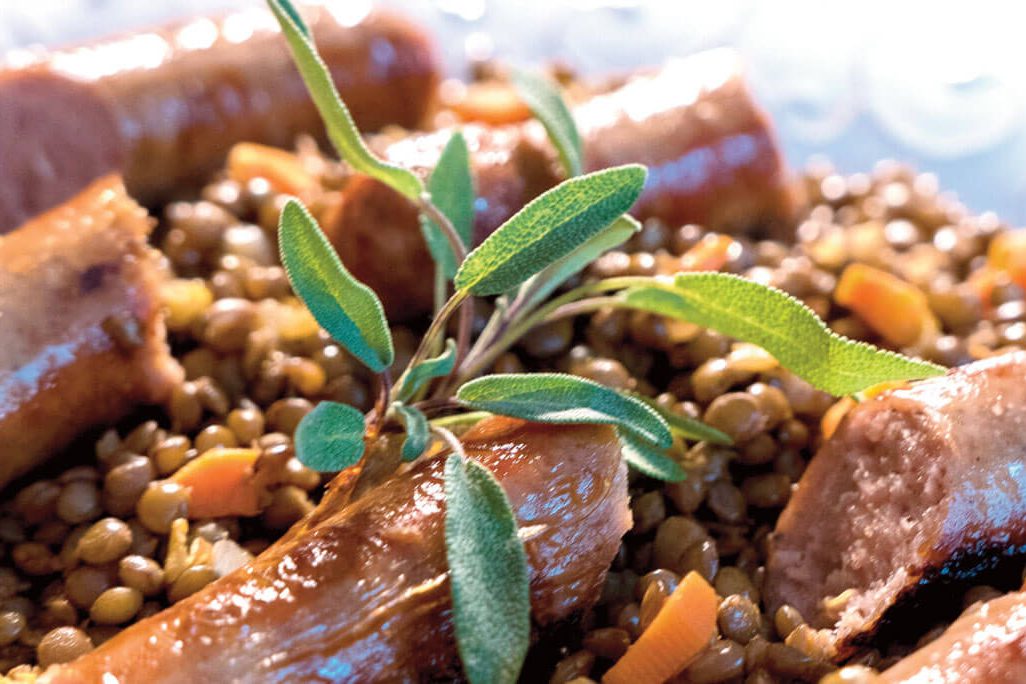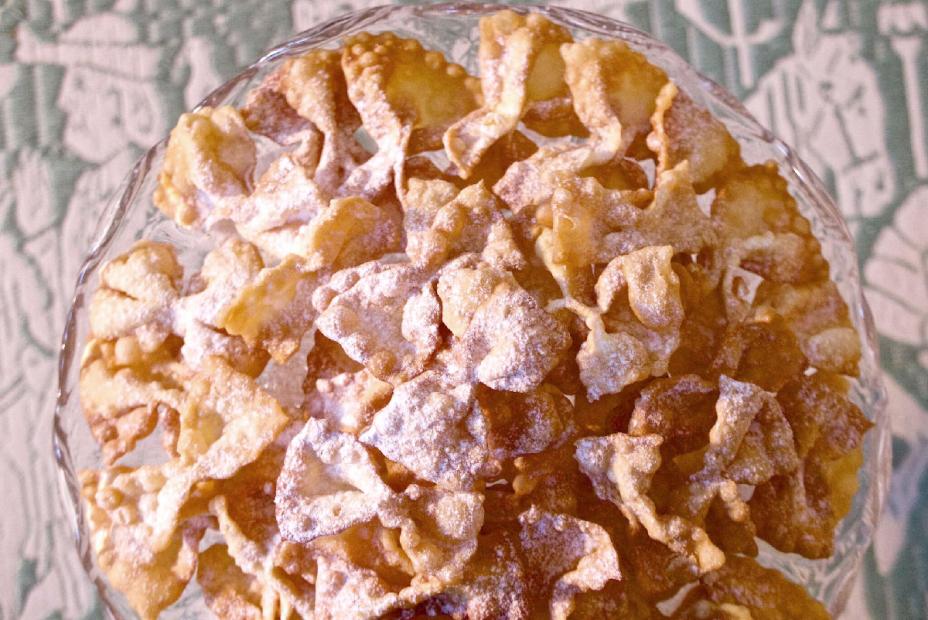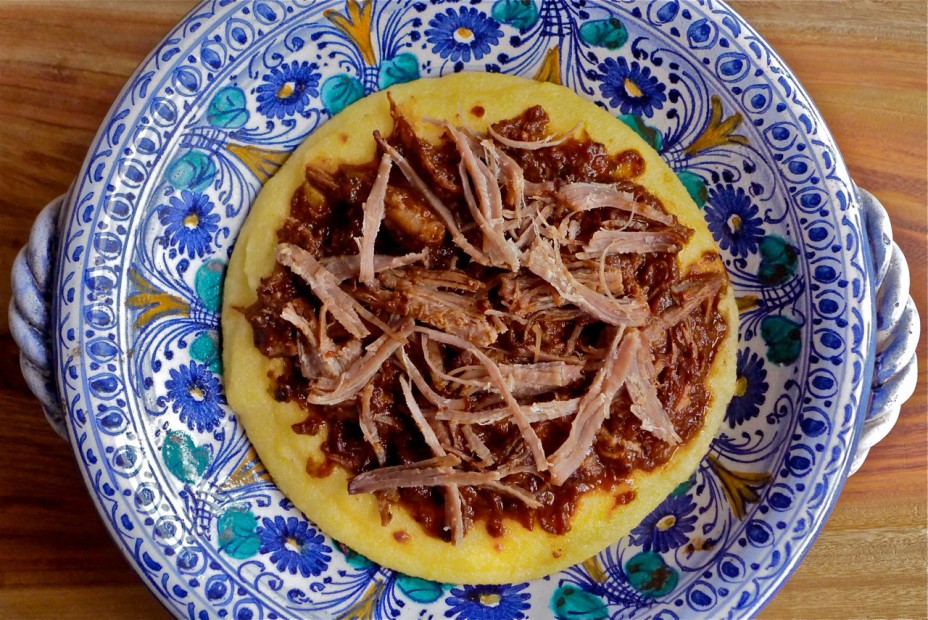When the editor of this newspaper invited me to contribute articles about food, I was pleased to accept. Here, I can feel liberated to write about my passions and prejudices knowing that I am among kin. My audience will, I suspect, agree that even the most esoteric discussion about Italian food is always topical.
By felicitous coincidence, L’Italo-Americano, founded by one Florentine immigrant, Gabriello Spini, began cranking out its first newspapers in San Francisco at precisely the same time in history that my father was born, in Toritto, Italy. It was 1908 and before the year was over, the first congress for women’s rights convened, in Amsterdam; Henry T. Ford rolled out the first Model T car; Albert Einstein astonished the world with the release of his quantum theory, and Arturo Toscanini conducted his first performance at the New York Metropolitan Opera. Four days before the year-end, on December 28, the most catastrophic earthquake in European history cracked open Messina, Sicily, taking 123,000 people in its wake and unleashing a tsunami that swallowed miles of southern Italian coastline. Shortly thereafter, my grandparents boarded a steamer bound for New York with their first-born still suckling at his mother’s breast.
Twenty years later, L’Italo-Americano was still humming along broadcasting such news to Italians that had put down roots in the Bay Area. At the same time, across the continent, Papà was a cub reporter filing stories with the Brooklyn Eagle scooping everything from the local crime scene to accounts of a blind suffragist by the name of Helen Keller. La stessa razza di pomodori, as the Italian saying goes — the same species of tomato! And so it was with me, that some fifty years on, I too followed suit, and became a scribe.
The first journalism job I landed, in my thirties, was writing a food column and reviewing restaurants for a syndicated group of newspapers in the metropolitan New York area. (I had taken a stab at politics in my twenties but fast lost my appetite for it.) Papà just couldn’t understand this. “How many recipes do people need?” my father—ever the pragmatist—asked. My mother, though a fine cook, piped in, “Don’t Americans know how to cook?” (Their joint aspersions really translated into something like, seven years shelling out college tuition, and she wants to make a living telling people how to make tomato sauce?) Never the dutiful daughter, I persevered.
My earliest food memory is a worm’s eye view of a kitchen counter where my mother shelled fresh garden peas just over my head, and minced onion, carrot, and celery together for Sunday’s ragù with the swift, rhythmic rocking of the mezzaluna. I was ever underfoot, inhaling the vapors of winey stracotto, or listening for the crack of the spaghetti as she broke it in two, a sure sign that it was almost time for dinner. Mealtimes were always eagerly anticipated, even when my parents were acting out the war of the city states over the dining room table. That ritual pause at the end of each day came to a halt for me when I left home for college, followed by a spell at the University in Edinburgh. For the first time, I was entirely on my own.
My antidote to the bland boiled meat and rutabaga I faced in the dormitory was a bus ride to Leith Walk, where among the gritty tenements and dodgy pubs at the waterfront was Valvona & Crolla, the only Italian grocer in the city. There I inhaled the aromas of the imported salumi and provoloni that festooned the beams above the counter, and shelled out what little money I had for a blessed piece of pungent cheese. My culinary career began in this most unlikely of places, where I realized that such fare as I was nurtured on was, for me, one of life’s necessities.
I began reading everything I could about cooking and amassing a culinary library that would follow me back to America and never stop growing. Italian cooking, French and Mediterranean cuisines, the food of the Levant, I was immersed in them all. After my studies were completed, I rented a railroad flat in the basement of a Georgian townhouse. Hardly luxurious digs, but the kitchen, in which no doubt servants once prepared meals for the “upstairs” inhabitants, was as big as the skating pond I glided around as a child, or so it seemed. Appointed with a large gas stove, an oversize stone sink, a fridge, and an adequate kitchen table, it was all I needed to begin cooking in earnest. There was even a niche along one wall, where the cook had once slept that I swiftly transformed into a larder.
If Scotland’s cuisine in those days was not exactly the stuff of a food aficionado’s dreams, its vegetable markets, fishmongers, butcher shops and grocers sold all the beautiful raw materials I could need for my early culinary education. Travels to London and in later years, all around Europe, provided opportunity for fieldwork. In Italy, I went off the highway and even off the map to seek out the nooks and crannies where I was most likely to find genuine local cooking.
Some four decades have passed since that moment on Leith Walk when I was reawakened to the seductions of Italian food. I have studied cooking both formally and informally, and pored over endless culinary works, ancient and modern. I have been a galley cook on a large sailing ketch, worked the “front” and the “back of the house” in commercial kitchens, and, most happily, been a home cook writing and publishing my own books. For me, there is something profoundly comforting about nourishing people and remembering those who came before us who handed down what was authentic and special.
In this column, we shall, together, break bread with our ancestors, chatting, forks in hand, with home cooks and professional chefs, and with artisans who produce everything from cheese to chocolate, olive oil to vinegar. We will find out what’s cooking in the villages, towns, and provinces of Italy’s twenty regions and among the diaspora of Italians that have transplanted themselves outside its borders, embracing the old ways and new along the way. It may necessitate gymnastics straddling all the arguments and opinions — as the Italians are inclined to have — about what is best as we follow our noses from table to table, facendo la scarpetta (mopping up our plates) along the way.
Zuppa lombarda
Tuscan Bread and Bean Soup
For 4 people
Serves 4
We never wasted a crust of bread when I was growing up. From time to time, it was all my father wanted to eat for breakfast, pane e aqua— an homage to his impoverished forebears, I suppose. He would have loved this dish, one of the endless prescriptions the Italians have for using up bread scraps. It is one of my favorites, and a fine way to savor really good olive oil as well, which should anoint the bread and beans generously upon serving. Mind that the dish must be made using dried, not canned beans because the flavorful bean-cooking liquid becomes the broth for the soup (canned bean liquid is no substitute). Actually an old standby of the Tuscan cucina povera, and not, as its name implies, a Lombardian recipe, let it be at once a toast to our founder, the fiorentino Sig. Spini, and a kiss to Papà, wherever the heavens you are these days.
1 cup dried cannellini or Great Northern beans
5 large cloves garlic, crushed
1 sprig fresh sage with 8 leaves
3 tablespoons extra-virgin olive oil, plus more for drizzling over soup
2 teaspoons fine sea salt
8 slices of stale ciabatta, or other sturdy artisan country bread
freshly ground black pepper
1. Wash and pick over the dried beans. Put them in a pot with 5 cups cold water. Let stand overnight at room temperature, or up to 3 days, chilled. Alternatively, quick-soak the dried beans by putting them in a saucepan with 5 cups water. Bring to a boil, cover, remove from heat, and let stand for 1 hour.
2. Transfer the re-hydrated beans with their soaking water to an ample pot. Add 4 of the garlic cloves, the sage sprig, and the 3 tablespoons of olive oil. Bring to a boil and immediately reduce to a steady simmer. Cook gently over medium-low heat until the beans are tender, about 1 hour. There should be a ratio of about 1 part cooked beans to 2 parts bean stock. Add 2 teaspoons salt, cover, and set aside until the salt is absorbed, about 15 minutes. Taste and adjust salt to taste; fish out and discard the sage.
3. Toast the bread lightly; rub on both sides with the remaining garlic clove. Place two of the bread slices on the bottom of four individual soup bowls; drizzle with olive oil. Pour a ladleful of the hot beans and some of their liquid over each piece of bread. Sprinkle generously with freshly ground black pepper and drizzle with additional olive oil to taste. Serve at once.
Julia della Croce is a print & broadcast journalist and James Beard award-winning cookbook author, cooking teacher, culinary consultant & recipe developer. You can visit her on her website, www.juliadellacroce.com and blog, http://juliadellacroce.com/forktales1/ Connect on Facebook: Julia della Croce – chef & foodwriter Twitter: @juliadellacroce































